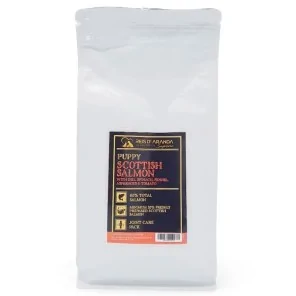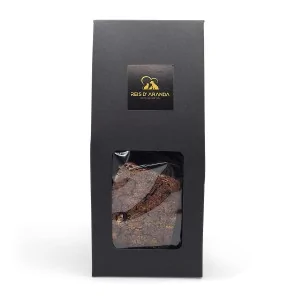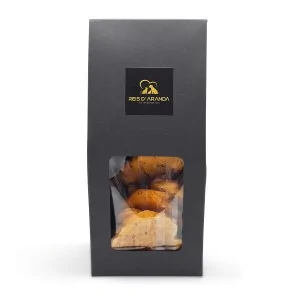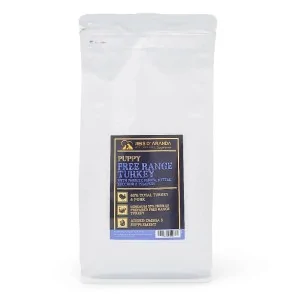The Tornjak originated from genetically homogeneous, almost extinct, indigenous shepherd dogs. These dogs have...
THE CATALAN GOS D'ATURA
INTRODUCTION
The Catalan shepherd dog (gos d'atura català in Catalan) is a breed of dog native to Catalonia. It is a shepherd dog that was mainly used to guard the flocks during the day in the Pyrenees area and in the area occupied by transhumance related to this area. This dog is bred in Europe, especially in Spain, Finland, Germany and Sweden.
THE ORIGIN OF THE CATALAN GOS D'ATURA
The origin of this breed of sheepdog is the same as that of the other herding dogs of the high European mountains. They come from the Asian dogs that came to Europe with the invasions of Eastern barbarians and were scattered throughout Europe by the Romans. In this way it has as close relatives the Pyrenean Shepherd Dog or the Bergamo Shepherd Dog. Likewise, at sites such as those at Minferri, remains of dogs of similar size and structure have been found as early as the Neolithic period, around 2000 BC. However, it is not possible to determine exactly how long ago there was what is now known as the Catalan shepherd, as we only have drawings dating back two hundred years that testify to its existence.
Within the heterogeneous population of dogs that lived in the Pyrenees, it has been possible to select different dogs that have given rise to different standards and breeds such as the small Pyrenean shepherd dog, the Pyrenean mastiff, the Basque shepherd dog or the Catalan shepherd dog itself. And within this group it has still been possible to select isolated subgroups such as the Aranese Shepherd Dog, the Sardinian Shepherd Dog and the Catalan Shorthaired Shepherd Dog, although they have no official recognition.
In 1919 it was recognised as a Spanish dog breed. In 1929 the first standard was drawn up on the basis of two dogs, Tac and Iris, the two winners of a dog show. However, all this could not stop the debacle of the breed. With the arrival of tourism to the Pyrenees, which is where most of the breed was located, foreign breeds also arrived, and the Catalan Shepherd Dog was considered a type of small dog that had always been undervalued in the face of the foreign dogs that had been selected and improved for so many decades, so that it was abandoned and mixed with other breeds.
What is evident is that there was a lack of an enthusiastic and discerning breeder who started the modern breeding of the sheepdog and tried to fix its typicality. This breeder, father of the recovery of the breed, came in the person of Angel Jorba who, during the 70's, starting with some dogs found in the Solsonès and Bergadà, began, under the affix Laketània, the rigorous selective breeding of the Catalan Shepherd Dog. The blood and the typicality of their magnificent dogs run through the veins of our dogs today and have marked the breed forever. All current breeding dogs carry genes from these two dogs. In 1982 the Club del Gos d'Atura Català was created, various breeders began to proliferate and in 1982 a new standard was drawn up which is still in force.
Nowadays, the dog has been able to spread a lot as it has been proved that it is not only used for herds but also as a companion animal and there are more than 4.000 dogs. These figures are downwards, as they do not include the specimens that are not from specialised breeding, which still exist in the farmhouses, nor the short-haired and pig-haired varieties that do not meet the current standards set by the club for the breed. For all these reasons, the breed is now considered to be out of danger.
WHAT IS THE CATALAN GOS D'ATURA LIKE?
GENERAL APPEARANCE: Medium build, well conformed, medium size, beautiful coat.
IMPORTANT PROPORTIONS: Slightly longer than tall, approximately in the proportion 9 to 8.
HEAD: Head strong, slightly convex and broad at base, not heavy, well proportioned to the rest of the body. The skull to muzzle ratio is 4 to 3.
CRANIAL REGION:
SKULL: Slightly longer than broad, with a distinctly accentuated furrow in its first third, which then flattens out and the rest up to the occiput forming a crest. Pronounced occipital bone. The upper profile of the skull is slightly domed, which may represent a short, less accentuated space in the centre of the skull. Frontal sinuses well developed, both longitudinally and transversely. Superciliary arches well marked.
STOP: Well visible but not very pronounced.
FACIAL REGION:
TRUFFLE: Straight, proportionate to the head and necessarily black.
NOSE: Straight, rather short, in the shape of a truncated pyramid with rounded edges.
LIPS: Rather thick, set, almost straight cut, with the lower lip not drooping. Intensely pigmented in black. The palate is also pigmented in black.
TEETH : Strong, of good size, white and firm. Scissor bite. Fangs sometimes blunt in working dogs.
EYES: Very open, expressive, lively and intelligent. Rounded, dark amber in colour, eyelids rimmed with black.
EARS: Set on high, triangular, fine and pointed. Cartilage softly set, not thick, hanging close to the head. Ratio of width to length 8 to 10. Covered with long hairs ending in a fringe. Movable. In working dogs, clipped may be acceptable.
NECK: Strong, solid, muscular, short, but in proportion to allow good mobility. Well set on the back.
BODY: Slightly elongated, strong, muscular, giving a feeling of strength and agility.
CRUZ: Outstanding.
BACK: Straight back line, not saddle-backed, with slight rise at croup which in any case will be equal to or slightly less elevated than withers. This difference at first sight may be favourable to the croup, due to the amount of hair and undercoat on the croup.
Croup: Robust and muscular, gently sloping.
CHEST: Broad, well developed, reaching to elbow level. Ribs arched, not flat, in order to give good working ability.
BELLY: Belly slightly tucked up, with short, but strong and well marked flanks.
TAIL: Set on rather low. May be long (slightly above the hock) or short (not exceeding 10 cm). There are anurans and in working dogs, tail docked. The carriage of the tail when the dog is at rest is hanging, curved at the lower end, although sabre-shaped tails are acceptable. In action the tail is carried gaily, but never curled over the back. It is covered with abundant, softly wavy hair.
LIMBS
FOREQUARTERS: Strong, dry, straight and well muscled when viewed from the front and the side. The distance elbow-cross is approximately equal to the distance from elbow to ground.
Shoulders: Muscular and strong, slightly sloping.
ARM: Strong and muscular, with elbows parallel, neither closed nor open, close to the body.
FOREARM: Vertical, strong, well prepared for work.
Underarm and upper arm: Following the same verticality as the forearm, being rather short.
HANDS: Oval, with hard black pads. Interdigital membranes well visible and covered with abundant hair. Nails black and strong.
HINDQUARTERS : Strong, muscular and well muscled, giving a feeling of power and agility.
Upper thighs: Long, broad and muscular, with strong bone.
LEG: Strong bone and muscle.
Hocks: Rather well let down. Parallel and well sprung.
METATARSUS: Rather short, strong and vertical to the ground.
FEET: Same as above, but with a double dewclaw, provided with bone, low set, connected to each other and to the first toe by an interdigital membrane.
GAIT / MOVEMENT: Smooth, typical of sheepdogs. The gallop is only obtained in very large spaces, so that in the ring the typical movement is the short trot, with the movement typical of all dogs with dewclaws.
SKIN: Rather thick. Tight on body and head. Well pigmented.
COAT
HAIR: Long, straight or very slightly wavy. Rough. Abundant undercoat, especially on the back third. On the head, beard, moustache, toupee and eyebrows are visible. Tail well furnished with hair, as are the limbs. It should be noted that a typical phenomenon occurs in the moulting of the coat, which takes place in two sequences. In the first, the hair of the front half of the dog is shed, giving the impression of two half-dogs with different coats.
In the second, the back half of the dog sheds its coat, so that they are once again the same.
COLOUR: Seen from a distance they appear as monocoloured, but may have lighter shades on the extremities. Seen close up, it can be seen that the colouring is due to the mixture of hairs of different shades: waffle, more or less reddish brown, grey, white and black. The basic colours resulting from their mixture are:
- Barquillo, in its light, medium and dark shades.
- Sand, composed of brown, waffle, white and black hairs. With also three shades, light, medium and dark.
- Grey. Formed by white, grey and black hairs, with shades ranging from silver grey to blackish grey. If the black is dominant and is only combined with white hairs, it gives a black with a frosty appearance.
- There are also specimens with a mixture of black hairs, wattle and reddish sand, which may dominate in some parts, giving the impression of black and tan specimens.
- Black and white patches are not permitted. Sometimes some small groupings of white hairs are tolerated in the form of a pectoral star, or on the upper part of the toes which, however, should not in this case be accompanied by the white nail.
SIZE:
HEIGHT AT WITHERS:
- Males from 47 to 55 cm.
- Bitches 45 to 53 cm.
FAULTS: Any departure from the foregoing points should be considered a fault and the seriousness with which the fault should be regarded should be in exact proportion to its degree and its effect upon the health and welfare of the dog.
SERIOUS FAULTS
- Flat head or without groove.
- Ears pink, poorly set on, with strong cartilage, long or set wide apart.
- Light coloured eyes.
- Lack of two premolars.
- Slight prognathism.
- Deviant limbs or feet.
- Some of the nails white.
- Lack of bone in the dewclaws or simple dewclaw.
DISQUALIFYING FAULTS:
- Aggressiveness or extreme shyness.
- Any dog showing clear signs of physical or behavioural abnormalities.
- Lack of pigmentation of lips, nose, eyelids or palate.
- Brown nose.
- Bluish eyes.
- White patches.
- Missing more than two premolars or two teeth.
- Tail curled over the back.
- Lack of dewclaws or interdigital membranes.
- All nails white.
- More than three centimetres over or under the size limits.
- Head with the appearance of a Pyrenean Shepherd or Briard.
- Undershot or overshot mouth.
All things being equal in terms of quality, dogs which have not been mutilated (ears, tail and fangs cut off in the course of their work) will always be given preference in the classification. Dogs with such mutilations, which are not working herding dogs, shall not be graded.
Well pigmented shades are desirable in colour and should be appreciated.
THE HEALTH OF THE GOS D'ATURA CATALÁN
The Catalan Gos d'Atura is a dog which, in general, is in excellent health. We can only point out that, in some lines, a tendency to hip dysplasia has been noted.
THE GROOMING OF THE CATALAN GOS D'ATURA
If we decide to live with a Gos d'Atura Catalán we must know that we must take the time to groom it. It requires frequent care to avoid tangles, knots and to remove any dirt that has stuck to it. As the hair usually covers his eyes, it may be necessary to trim it periodically. The hygiene of his beard should also be monitored.
CONCLUSION
It is a breed that has adapted to life in the city, but is not suitable for sedentary people. It can withstand cold temperatures. As it is a dog with a high energy level, it is essential to exercise it daily. Otherwise behavioural problems could arise. In addition to walks, at least three a day, it is advisable to practice sports with him.
Leave a comment
Log in to post comments
















